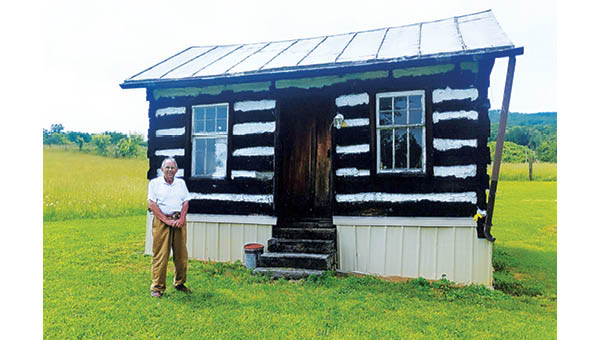EHS Aurasma project underway to enhance downtown walking trail
Published 6:08 pm Wednesday, February 1, 2017

Star Photo/Curtis Carden
Elizabethton High School Media Specialist Dustin Hensley, second from left, and students welcomed Carter County Tourism Coordinator Kayla Carter, far left, and Summit Marketing’s Eric Keller, far right, for a special presentation to assistance with their upcoming project to revamp the Downtown Elizabethton Walking Tour.
The Downtown Elizabethton Walking Tour is receiving some 21st Century treatment thanks to Elizabethton High School students.
In a partnership between the school’s journalism program and the Carter County Tourism Council, students will have the responsibility to create a script and video content for an Aurasma application, a free and public online augmented reality program that turns everyday objects in interactive chances for users.
Students part of the Betsy Scrivener were welcomed with a special presentation Wednesday afternoon with Carter County Tourism Coordinator Kayla Carter and Eric Keller with Summit Marketing providing an education slideshow to help prepare the group for the project.
EHS Media Special Dustin Hensley added the project is an exciting step for the students looking to make an impact on the community and thanked Carter and Keller for stopping by the school.
“We want this project to be student-led really,” Hensley said. “It’s great to have people like this to come in and have the resources to help give an understanding about what the project is wanting, the aesthetic is going to be and what our target audience is. Helping provide a marketing class for our journalism students is a different perspective for them that they aren’t used to so I’m glad they got a chance to hear that today.”
Engaging the youth is just one of the many perks to help encourage pride in the community, according to Carter.
“I think having the youth get involved with the community is of utmost importance,” Carter said. “The number one goal is to have the students go out and explore their home and be able to share that with their friends to create this positive rhetoric in the community. I think a lot more people lean more toward saying the downside of things about our community. But if we can get our students to see what’s out there and get them to enjoy it … they’ll be that word of mouth that’ll be essential for the growth of the community.”
Having Keller, who provided an informative question-and-answer session with students about the ins and outs of marketing was critical, Carter added. The county has worked with Summit Marketing before on the development of their Downtown Elizabethton Walking Tour brochure. The hope moving forward is to have the Aurasma project be integrated within the new brochure, which is still under development.
“It’s great to see and work with a generation that’s been raised up in technologic advancements,” Keller said following the presentation. “Always having a phone, always having a computer, just a generation that doesn’t really know a lot the stuff we went through. But to see them excited about working in the community, excited about wanting to get involved with downtown Elizabethton and learn more about the landmarks is awesome to see.”
During the session, students were quick to pitch ideas and ask questions to prepare them for the endeavor.
“From my point of view, what I really want for these students is for them to love their community,” Hensley said. “A student mentioned during the meeting that he’s excited for this because he gets to learn about his community. He’s lived here his entire life and doesn’t know much about the history. I want all of our students to be that way. I want this to be a source of pride for our young people that they can do great things in Elizabethton and don’t have to move away somewhere else to be able to experience something cool like this project. They can still be students and do something great for the community.
“They can get this ‘real world experience’ where they have responsible,” he added.
EHS is no slouch when it comes to getting the job done, ever apparent from the recent nod from XQ America in regards to the school’s Bartley Project, developed by sociology students that received national acclaim.
Following the same motive, the feature journalists of Elizabethton are ready to hit the ground running, Hensley said.
“The next steps now for the students is to find locations on the walking tour,” he added. “For them to decide what spots they want to tackle, to research those areas and find people in the community that have information about that. Work with historians, residents and see what can be placed in the video … work with storyboarding and go from there.”





